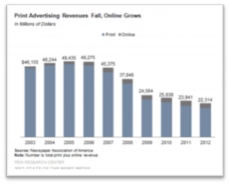Time For A Reality Redo

The idea that a new website or app can undermine years of careful messaging may be deeply frustrating to marketers – but it is a reality that they must face. –Itamar Simonson, Stanford Business School professor and author of “Absolute Value: What Really Influences Customers in the Age of (Nearly) Perfect Information”
By Karen Webster, CEO, Market Platform Dynamics (@karenmpd)
Itamar Simonson has made a stunning discovery and one that goes against the grain of what he’s taught his MBA students for decades: the opinions of others trump price, brand, price and preference in many consumer-purchasing categories.
In 1992, he and a colleague did a study to determine how consumers would decide which brand of camera to buy. He offered them several choices priced at $169, $239 and $469. The conclusion drawn then was that consumers picked the $239 camera when shown three price options, compromising on the item priced in the middle.
Twenty years later, everything changed.
In 2012, the same experiment was conducted. Price and brand preference had absolutely nothing to do with the decision process. Instead, consumer ratings and reviews did. This led Simonson and his colleagues to push the concept further, resulting in a whole new body of work that rewrites the executive playbook on igniting innovation in payments and commerce.
Simonson’s work relies on something called the Influence Mix – three things that affect consumer purchasing: Preferences (P), Marketing information (M) and Opinions from Others (O). He views these as levers in determining how to ignite, launch and sustain interest in newly introduced products and services. The more consumers rely on one, the less they will use the others to make their purchasing decision. The big insight from Simonson’s work is that the wisdom of the crowds phenomenon takes on way more importance, the more important a purchase is to a consumer.
Innovation Project 2014 delegates will be among the first to hear Simonson’s discussion of this groundbreaking research, findings that he told me almost completely unravel everything that we all thought we knew about influencing consumer’s buying decisions. He has dozens of concrete examples of how this has made or broken product launches and promotions, including some amazing anecdotes about iPhone, Blackberry and Nokia. And he also applies his theory to some of my all-time favorite purchases – luxury goods – and answers the question, how important is O to luxury goods purchasing decisions? The answer may surprise you. It did me.
Innovation Project 2014 delegates will also have the chance to meet Professor Simonson and pick up his book, and have it signed by him, too. The book will be fresh off the presses, so unless the Amazon drones are flying, you’ll be among the first to get the book, too!
I was thrilled when Professor Simonson agreed to join us at The Innovation Project and can’t want to hear what he has to say. What I found so fascinating about his work is how software, apps and connected devices are not only influencing product design and product function, but they are becoming critically important in creating marketing and promotional strategies that are just as important in igniting these products once they get to market.
Clearly, opinions were always important in shaping purchasing decisions, but “in the good old days” it was cumbersome to go outside of a circle of friends for that insight. Celebrity endorsements were commonly used tools, as were things like The Good Housekeeping Seal of Approval or Consumer Reports ratings that gave consumers some comfort that “others” with credibility had vetted the product.
eBay’s ratings were critical in igniting eBay’s marketplace since buyers and sellers who never met each other at least had some way to assess the quality of the seller and feel comfortable bidding and buying from perfect strangers. Now perfect (or almost perfect) information, as captured via reviews and ratings from perfect strangers, override all of the things that consumers used to rely on to make their decisions – their prior preferences, what marketers tell them about their products and even price.
As you all know, I love getting inside the minds of consumers and understanding how and why they make buying decisions. Professor Simonson’s work is a really big and important step to understanding how all of this has changed – and so suddenly in the last couple of years. I hope you’ll join me in hearing him and a panel of some of the most innovative and creative players in commerce tackle this topic and share how they are pivoting to adapt to this new and important dynamic.
And if you want a sneak peek, here is an article in this month’s Harvard Business Review that’s worth reading.
So, what are you waiting for??? Get on the list!!!
